Pygmy Corydoras: Everything You Need To Know!
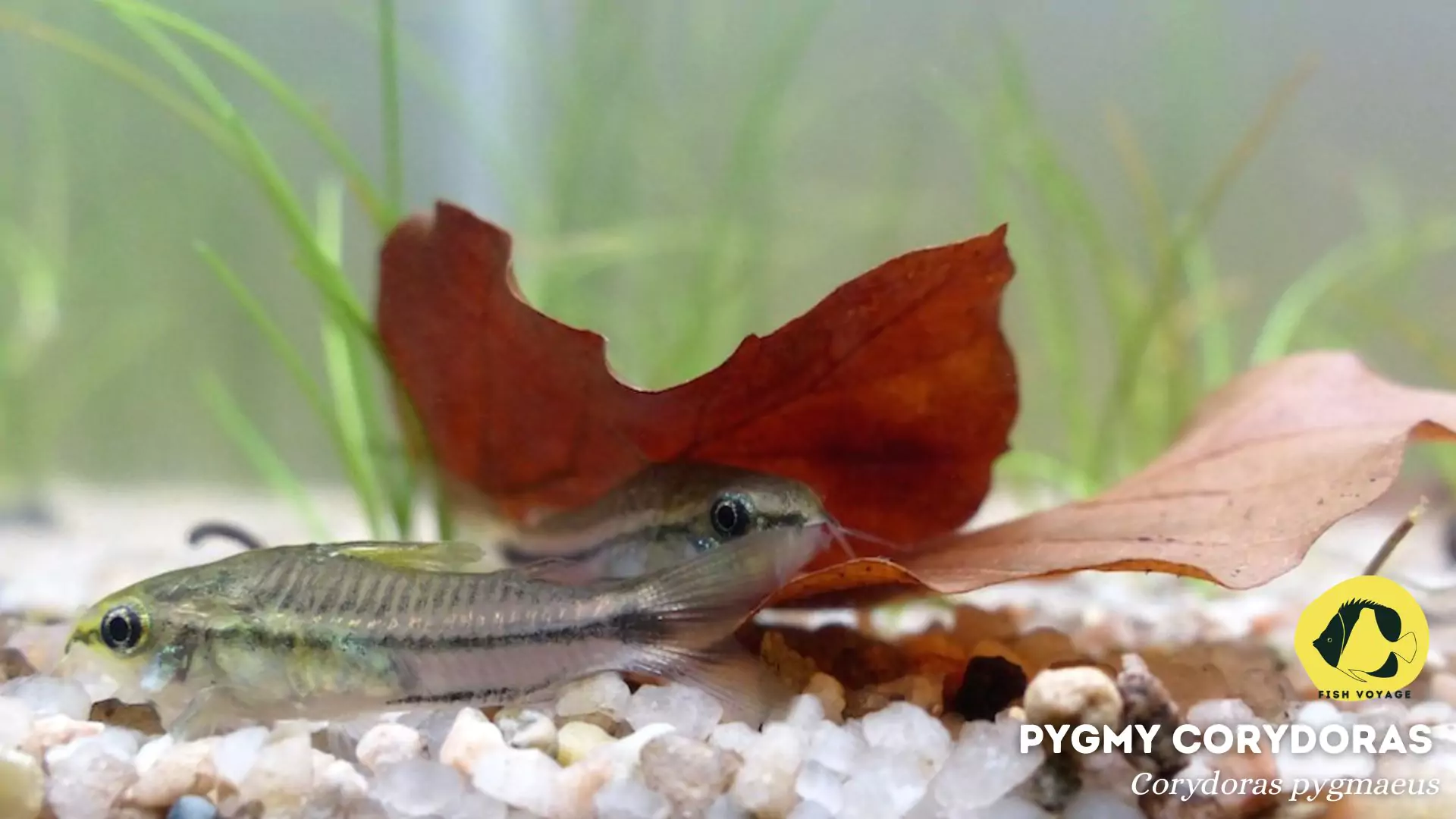
Pygmy Corydoras, scientifically known as Corydoras pygmaeus, are charming freshwater fish cherished by aquarium enthusiasts worldwide. Renowned for their diminutive size, peaceful demeanor, and captivating behavior, Pygmy Corydoras have carved a special place in the hearts of aquarists. Their popularity stems from their endearing social nature and ability to thrive in community tanks, making them ideal additions to aquarium setups of all sizes. With their playful antics and striking appearance, Pygmy Corydoras offer aquarists a delightful glimpse into the fascinating world of aquatic life. Join us as we delve deeper into the captivating realm of Pygmy Corydoras, uncovering everything you need to know to care for these enchanting creatures.
Overview of Pygmy Corydoras
Scientific Name and General Description
- Pygmy Corydoras, scientifically known as Corydoras pygmaeus, are a species of small freshwater catfish belonging to the Corydoradinae subfamily.
- They boast a streamlined body with distinct patterns and coloration, making them a visually appealing addition to any aquarium.
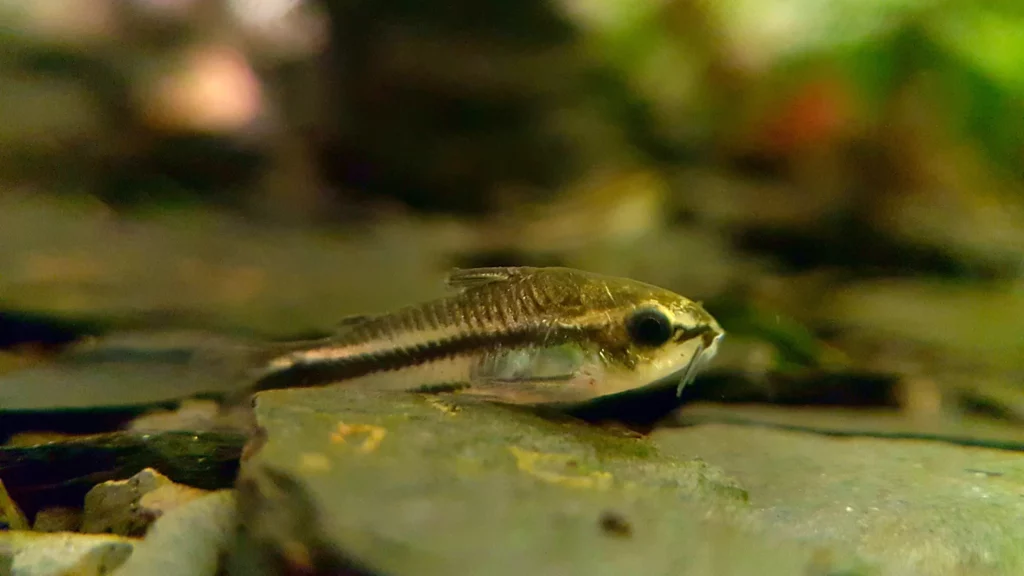
Small Size and Peaceful Temperament
- One of the most notable characteristics of Pygmy Corydoras is their petite size, typically reaching around 1 inch (2.5 cm) in length.
- Despite their small stature, they possess a peaceful temperament, making them excellent community fish that can coexist harmoniously with a variety of tank mates.
Social Behavior
- Pygmy Corydoras are highly social creatures that thrive in groups, preferring to shoal with their own kind.
- Their gregarious nature is evident in their constant activity within the aquarium, where they can be observed foraging for food and interacting with one another.
Native Habitat in South America
- Originating from the freshwater streams and tributaries of South America, Pygmy Corydoras are primarily found in the Amazon basin.
- They inhabit slow-moving waters with sandy or muddy substrates, often dwelling among densely vegetated areas where they can seek refuge and forage for food.
By incorporating these key points, readers can gain a comprehensive understanding of Pygmy Corydoras, their natural habitat, and their appealing characteristics as aquarium fish.
Appearance
Small Size and Streamlined Body
- Pygmy Corydoras are characterized by their diminutive size, typically reaching lengths of around 1 inch (2.5 cm) when fully grown.
- They possess a sleek and streamlined body shape, which enables them to navigate easily through the water and maneuver within the confines of an aquarium.
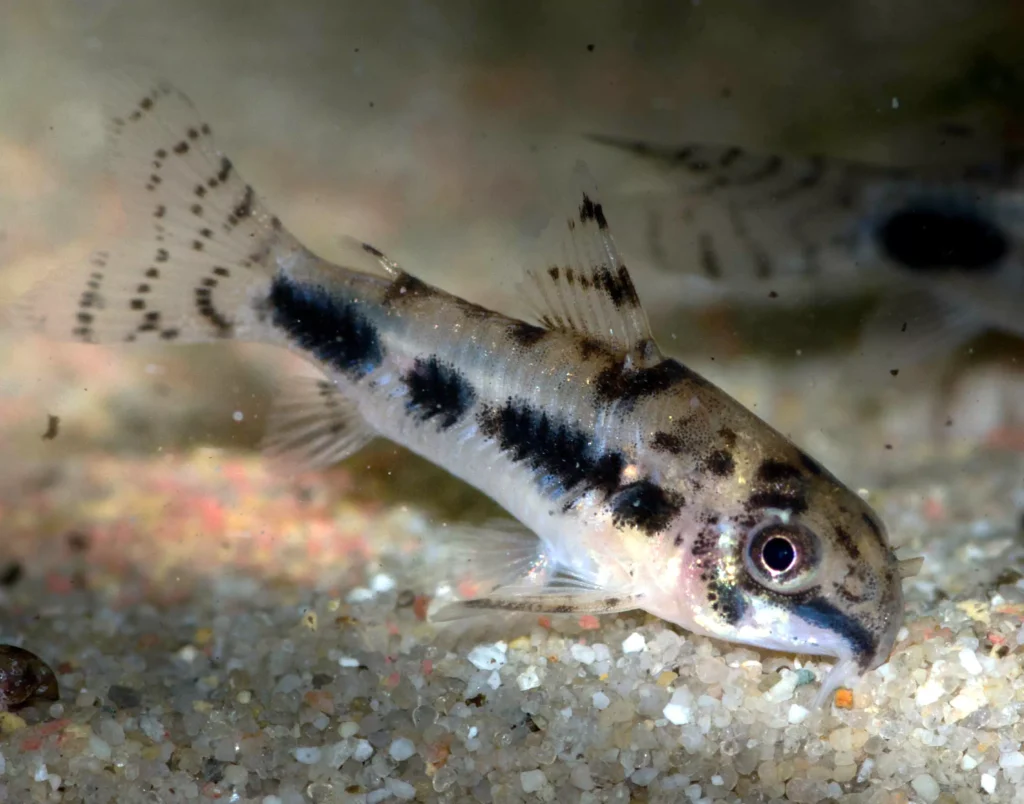
Distinctive Coloration and Patterns
- One of the most striking features of Pygmy Corydoras is their intricate coloration and patterning.
- They often exhibit a combination of shades such as silver, bronze, and black, adorned with distinct markings along their body and fins, including spots and stripes.
Variations Based on Gender and Age
- While Pygmy Corydoras exhibit sexual dimorphism, the differences in appearance between males and females are subtle.
- Mature females tend to have a slightly rounder and broader body shape compared to males, who may appear slimmer and more streamlined.
- Additionally, during breeding periods, females may appear slightly larger as they carry developing eggs.
Color Enhancement with Age
- As Pygmy Corydoras mature, their colors may become more vibrant and pronounced, particularly during periods of optimal health and well-being.
- Proper care and a balanced diet can contribute to the enhancement of their natural coloration, further accentuating their beauty in the aquarium environment.
By elaborating on these points, readers can gain a deeper appreciation for the physical attributes of Pygmy Corydoras and better understand how their appearance may vary based on factors such as gender and age.
Tank Requirements
Tank Size and Setup
- Pygmy Corydoras thrive in a well-equipped aquarium with a minimum tank size of 10 gallons (approximately 38 liters).
- It’s essential to provide a spacious environment that allows for ample swimming space while accommodating their shoaling behavior.
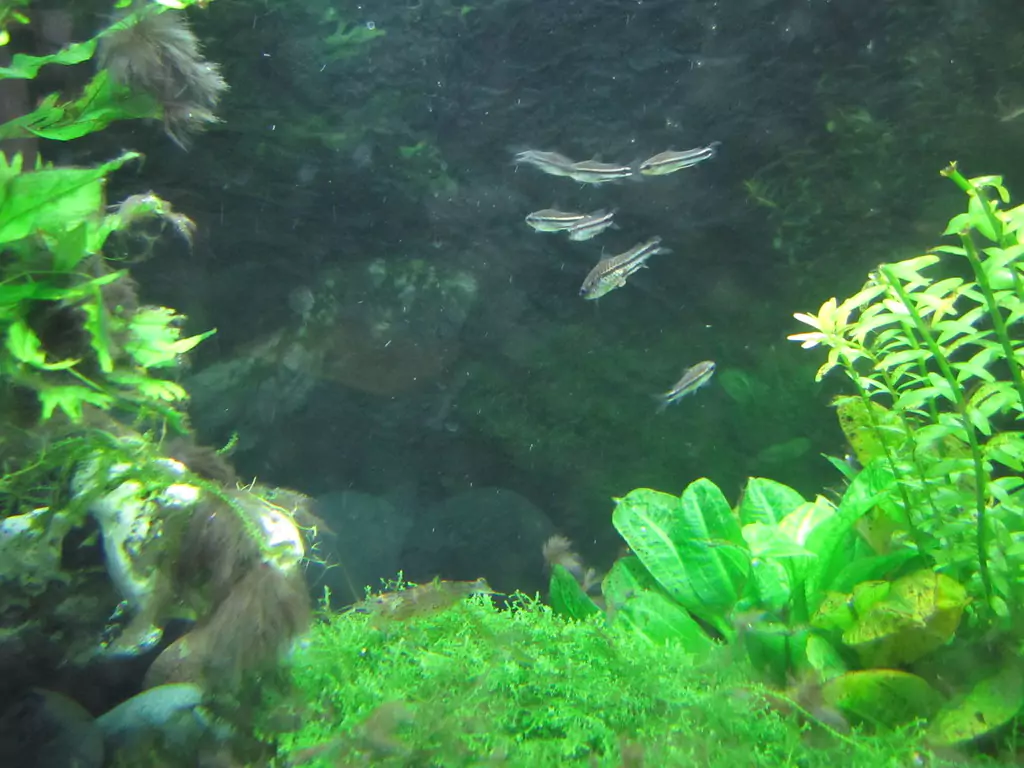
Water Parameters
- Maintain stable water parameters to ensure the health and well-being of Pygmy Corydoras.
- Ideal temperature ranges between 72°F to 78°F (22°C to 26°C), with a slightly acidic to neutral pH level ranging from 6.5 to 7.5.
- Keep the water hardness within the soft to medium range, with a dGH (degrees of general hardness) of 2 to 12.
Filtration and Water Quality
- Utilize a reliable filtration system to maintain optimal water quality and clarity.
- Consider employing a sponge filter or a gentle flow filter to prevent any discomfort to the sensitive barbels of Pygmy Corydoras.
Hiding Places and Vegetation
- Mimic the natural habitat of Pygmy Corydoras by incorporating plenty of hiding places and vegetation within the aquarium.
- Use driftwood, caves, and dense plants such as Java moss or Amazon swords to create sheltered areas where they can seek refuge and feel secure.
- Providing adequate hiding spots not only reduces stress but also encourages natural behaviors such as foraging and exploration.
Substrate
- Opt for a fine-grained substrate such as sand or smooth gravel, which mimics the soft, sandy bottoms of their native habitat.
- Avoid using sharp or coarse substrates that may cause injury to the delicate barbels and underside of Pygmy Corydoras.
By adhering to these tank requirements and creating a suitable aquatic environment, aquarists can ensure the health, happiness, and longevity of Pygmy Corydoras in captivity.
Feeding Habits
Dietary Preferences
- Pygmy Corydoras are omnivorous fish with a diverse diet that includes both plant matter and protein-rich foods.
- They have a preference for small live and frozen foods such as bloodworms, brine shrimp, and daphnia, which closely resemble their natural diet in the wild.
High-Quality Sinking Pellets or Flakes
- Supplement their diet with high-quality sinking pellets or flakes specifically formulated for bottom-dwelling fish.
- Choose pellets or flakes that contain a balanced blend of protein, vitamins, and minerals to support their overall health and vitality.
Importance of Variety
- Offer a varied diet to ensure that Pygmy Corydoras receive essential nutrients and maintain optimal health.
- Rotate between different types of live, frozen, and prepared foods to provide nutritional diversity and stimulate their natural foraging instincts.
- Incorporate occasional treats such as blanched vegetables or freeze-dried foods to add variety and enrich their diet.
Feeding Frequency
- Feed Pygmy Corydoras small portions multiple times a day, rather than one large meal, to prevent overfeeding and maintain water quality.
- Monitor their feeding behavior and adjust the amount of food accordingly, ensuring that all fish have the opportunity to feed without excess food accumulating in the aquarium.
Observation and Adjustment
- Observe the feeding behavior of Pygmy Corydoras to gauge their preferences and ensure they are consuming an adequate amount of food.
- Adjust their diet as needed based on their response and any changes in their health or behavior, consulting with a knowledgeable aquarist or veterinarian if necessary.
By providing a balanced and varied diet, aquarists can ensure the nutritional needs of Pygmy Corydoras are met, promoting their overall well-being and longevity in the aquarium environment.
Behavior and Compatibility
Shoaling Nature and Social Behavior
- Pygmy Corydoras are highly social fish known for their shoaling behavior, preferring to live in groups of their own kind.
- They derive a sense of security and comfort from being in the company of their fellow Corydoras, often forming tight-knit shoals that move and forage together.
Preference for Living in Groups
- Keeping Pygmy Corydoras in groups of six or more individuals is recommended to fulfill their natural social needs and promote their well-being.
- In larger groups, they exhibit more natural behaviors, such as exploring the aquarium, scavenging for food, and displaying intricate social interactions.
Compatibility with Other Fish Species
- Pygmy Corydoras are renowned for their peaceful demeanor, making them excellent additions to community aquariums.
- They coexist harmoniously with a wide range of tank mates, including small to medium-sized peaceful fish such as tetras, rasboras, and dwarf cichlids.
- Their non-aggressive nature and bottom-dwelling habits minimize the likelihood of conflicts with other fish species, creating a tranquil and balanced aquarium environment.
Bottom-Dwelling Behavior
- Pygmy Corydoras primarily occupy the bottom region of the aquarium, where they sift through the substrate in search of food.
- Their gentle nature and unobtrusive presence make them ideal companions for mid and upper-level fish species, allowing for a diverse and dynamic community tank setup.
Observation and Compatibility Testing
- Despite their peaceful nature, it’s essential to monitor the behavior of Pygmy Corydoras when introducing them to new tank mates.
- Observe their interactions closely and be prepared to intervene if any aggression or territorial behavior arises, ensuring the well-being of all aquarium inhabitants.
By understanding the social behavior and compatibility of Pygmy Corydoras, aquarists can create thriving community aquariums that provide a natural and enriching environment for their fish.
Breeding
Breeding Behavior Overview
- Pygmy Corydoras can be bred in captivity under the right conditions, although breeding them may require some patience and careful attention.
- Like many Corydoras species, they exhibit typical courtship behaviors, including males chasing females and performing courtship dances to initiate spawning.
Conditions for Spawning
- To induce spawning, replicate the natural breeding conditions of Pygmy Corydoras by providing a separate breeding tank with soft, acidic water and slightly warmer temperatures.
- Increase the temperature to around 78°F to 80°F (25.5°C to 26.5°C) and perform frequent water changes to simulate the onset of the rainy season, which triggers breeding in their natural habitat.
Spawning Behavior
- During spawning, Pygmy Corydoras engage in an intricate dance, with males fertilizing eggs as females deposit them on smooth surfaces such as leaves or tank decor.
- After spawning, remove adult fish from the breeding tank to prevent them from consuming the eggs or disturbing the fry.
Care of Eggs and Fry
- Once the eggs are laid, carefully transfer them to a separate container or incubator to protect them from potential predators and maintain water quality.
- Provide gentle aeration and ensure optimal water parameters to promote healthy egg development and hatching.
- After hatching, feed the fry small live foods such as baby brine shrimp or micro worms to support their growth and development.
- Perform regular water changes and monitor water quality closely to prevent any issues that may arise during the delicate early stages of the fry’s life.
Separate Breeding Tank
- It’s crucial to set up a dedicated breeding tank to provide a controlled environment for spawning and to prevent adult fish from preying on eggs or fry.
- Equip the breeding tank with appropriate hiding places and spawning sites to encourage natural behaviors and maximize breeding success.
By following these breeding guidelines and providing optimal care for eggs and fry, aquarists can successfully breed Pygmy Corydoras and contribute to the conservation of this beloved species within the aquarium hobby.
Common Health Issues and Care Tips
Common Health Issues
- Pygmy Corydoras are generally hardy fish, but they may be susceptible to certain health issues if their aquarium conditions are not optimal.
- Stress-related ailments such as fin rot, fungal infections, and bacterial infections can occur if water quality is poor or if the fish experience overcrowding or aggression from tank mates.
- Parasitic infections such as ich (Ichthyophthirius multifiliis) and skin flukes (Gyrodactylus) may also affect Pygmy Corydoras, particularly if they are introduced to the aquarium from contaminated sources.
Practical Care Tips
- Maintain excellent water quality by performing regular water changes and monitoring key parameters such as temperature, pH, ammonia, nitrite, and nitrate levels.
- Conduct weekly water changes of at least 20% to 30% to remove accumulated waste and replenish essential minerals and trace elements.
- Use a reliable filtration system appropriate for the size of the aquarium to ensure efficient mechanical and biological filtration.
- Avoid overfeeding Pygmy Corydoras, as uneaten food can decompose and contribute to poor water quality.
- Provide a well-balanced diet consisting of high-quality foods to support their immune system and overall health.
- Quarantine new fish before introducing them to an established aquarium to prevent the spread of diseases.
- Observe Pygmy Corydoras regularly for any signs of illness or abnormal behavior, such as lethargy, loss of appetite, or changes in coloration.
- If health issues arise, promptly address them by isolating affected fish, conducting appropriate treatment, and addressing any underlying causes such as poor water quality or aggression from tank mates.
By implementing these care tips and maintaining vigilant observation, aquarists can help ensure the health and well-being of Pygmy Corydoras in their aquariums, fostering a thriving and vibrant aquatic environment.
Conclusion
In conclusion, Pygmy Corydoras stand out as captivating additions to any aquarium, admired for their small size, peaceful nature, and engaging social behavior. From their striking appearance to their compatibility with other fish species, Pygmy Corydoras offer aquarists a rewarding and enriching experience. As readers contemplate enhancing their aquatic landscapes, it’s essential to prioritize responsible fishkeeping practices, ensuring the health and well-being of these fascinating creatures and their tank mates. Consider welcoming Pygmy Corydoras into your aquarium setup, and embark on a journey filled with wonder and delight as you observe these charming fish thrive in their aquatic habitat.
Additional Resources
Authoritative Books
- The Complete Idiot’s Guide to Freshwater Aquariums by Mike Wickham: This comprehensive guide covers all aspects of freshwater aquarium setup, maintenance, and fish care, including detailed information on Pygmy Corydoras and their ideal tank conditions.
- Aquarium Plants: The Practical Guide by Pablo Tepoot: Learn how to create a lush and vibrant aquatic environment for your Pygmy Corydoras with this practical guide to aquarium plant selection, propagation, and maintenance.
Recommended Products
- Aquarium Filters: Invest in a high-quality aquarium filter to maintain optimal water quality and ensure the health of your fish. We recommend the Fluval FX6 Canister Filter, known for its superior performance and reliability.
- Aquarium Test Kits: Monitor key water parameters with an aquarium test kit to keep your Pygmy Corydoras in optimal conditions. Check out the API Freshwater Master Test Kit, a trusted choice among hobbyists for accurate and easy-to-use water testing.
- Aquarium Decor: Create a naturalistic habitat for your Pygmy Corydoras with aquarium decor such as driftwood, rocks, and plants.
Frequently Asked Questions (FAQs)
1. Are Pygmy Corydoras suitable for beginner aquarists?
Yes, Pygmy Corydoras are excellent choices for beginner aquarists due to their hardy nature, peaceful temperament, and minimal care requirements. They are relatively easy to care for and can thrive in a variety of aquarium setups.
2. How many Pygmy Corydoras should I keep together?
Pygmy Corydoras are social fish that thrive in groups, so it’s recommended to keep them in schools of at least six individuals. Larger groups of 10 or more can further enhance their well-being and natural behaviors.
3. What do Pygmy Corydoras eat?
Pygmy Corydoras are omnivorous and enjoy a varied diet. They primarily feed on small live and frozen foods such as bloodworms, brine shrimp, and daphnia. Additionally, they can be supplemented with high-quality sinking pellets or flakes.
4. How can I breed Pygmy Corydoras in my aquarium?
Breeding Pygmy Corydoras requires replicating their natural spawning conditions. Set up a separate breeding tank with soft, acidic water and slightly warmer temperatures. Provide hiding places and smooth surfaces for egg deposition. Once eggs are laid, transfer them to a separate container for incubation and care until hatching.
5. Are Pygmy Corydoras compatible with other fish species?
Yes, Pygmy Corydoras are peaceful fish that are compatible with a wide range of tank mates, including small to medium-sized community fish such as tetras, rasboras, and dwarf cichlids. Their gentle nature and bottom-dwelling habits make them ideal additions to community aquariums.

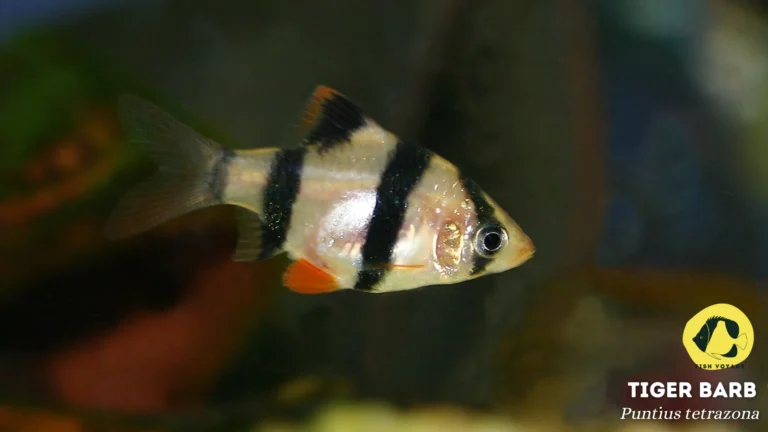
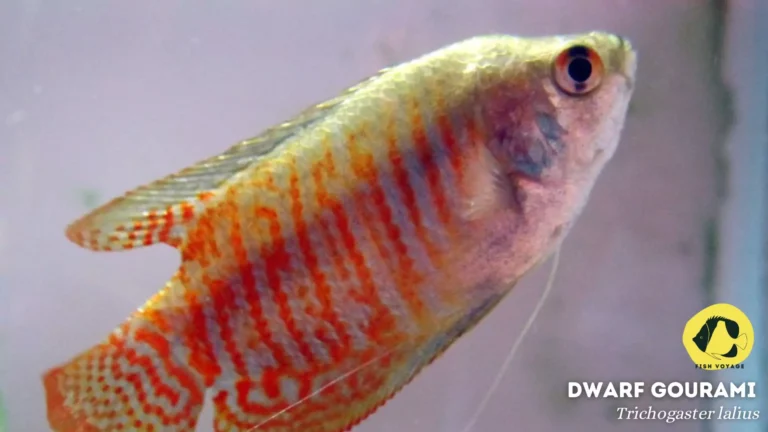

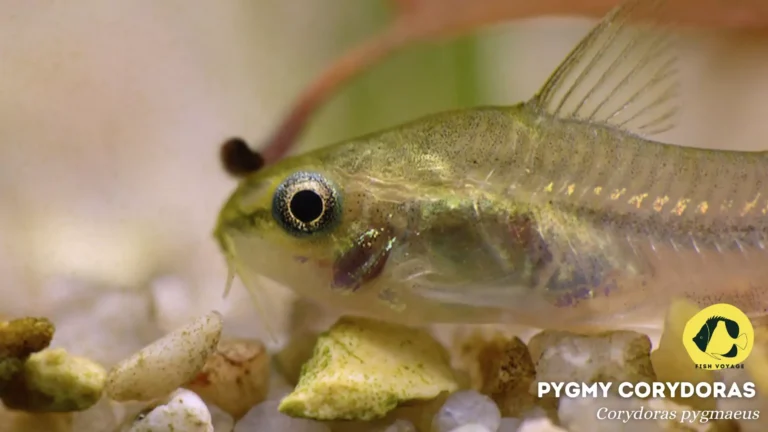
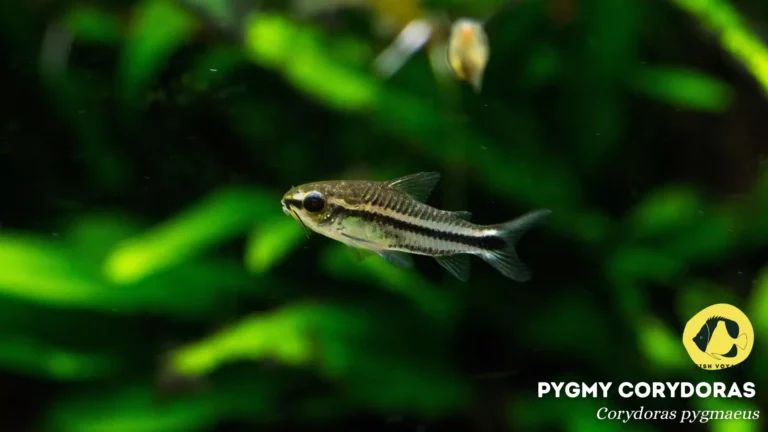
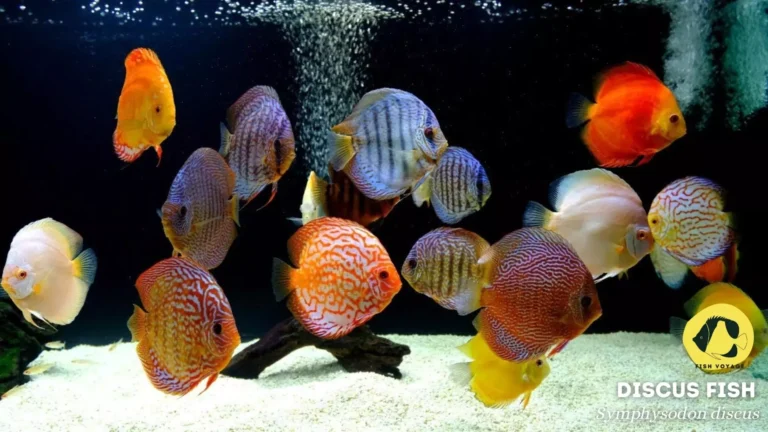
Its like you read my mind You appear to know so much about this like you wrote the book in it or something I think that you can do with a few pics to drive the message home a little bit but other than that this is fantastic blog A great read Ill certainly be back